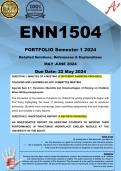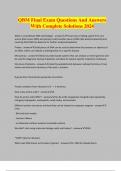Samenvatting
Summary Security Studies - Lecture notes and mandatory reading summaries of Cyber Threats
- Instelling
- Universiteit Leiden (UL)
This document contains all the lecture notes and summaries of the mandatory readings for the course Cyber Threats.
[Meer zien]













